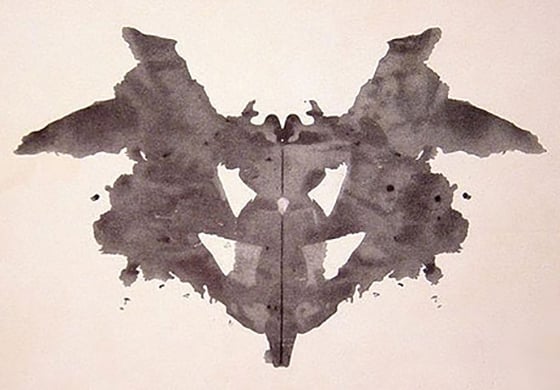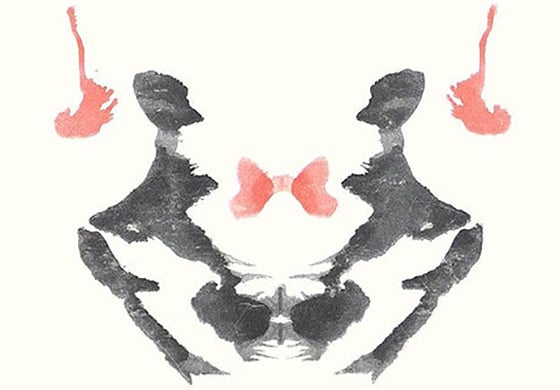The Rorschach Test, better known as the ‘Inkblot Test’ is one of the most widely recognized techniques used by psychiatrists and experts in the area of mental health throughout the years. Just look to the mainstream media and the candid way that these tests are portrayed in movies, television shows and cartoons. Despite its popularity, this form of testing has always been at the center of a great deal of controversy, with many experts in the field questioning the accuracy of its results.
Created in 1921 by Hermann Rorschach, the test involves sharing a series of 10 inkblots with a patient, five in black and white and five in color, and analyzing what they report to seeing on the cards. Widely used for decades, it is reported that the Rorschach Test was the most widely used projective test during the 1960s. Still used today, it is reported that approximately 77% of clinical psychologists here in the United States use the test in their assessment services.
While Rorschach has never divulged where he initially got the idea of the test from, his extensive studies demonstrated his dedication to developing a highly effective and accurate test for use in his own practice. He collected data from 405 different patients, as well as a control group of 117 non-patients, testing various inkblots and recording the patterns that he witnessed. During the years of 1918-1921, he would start with approximately 40 inkblots; the test would ultimately be reduced to 10 inkblots before he died in 1922 at the young age of 37.
Looking to either prove the validity of the test or label it as inaccurate and unfit for use in a clinical setting, the American Psychological Association completed and published a study in 2013 assessing its effectiveness. Surprisingly, the study found the test to be much more accurate than many experts had believed it to be. The researchers did, however, find that the test was challenging to understand and administer, likely contributing to its less than desirable reputation.
They explained, saying, “Clinicians face formidable challenges in staying abreast of the continuously evolving empirical literature on a vast array of disorders, psychological tests, and therapeutic interventions. The Rorschach provides a good example of some of the consequences of this difficulty. Due to the challenge of making sense of its complex, scattered, and disparate literature, particularly within the context of highly publicized critiques, many psychologists have simply concluded that it is invalid. But this is not accurate.”
Throughout their report the researchers clarified the various aspects of the test, providing clear, concise directions and guidance for those looking to administer the test. They believe that by clarifying the test they will empower more professionals to understand and utilize the test in their own practices.
If you are interested in trying the test, you can take an online version HERE.

Source: Rorschach-inkblot-test.com

Source: Rorschach-inkblot-test.com


Source: Rorschach-inkblot-test.com

Source: Rorschach-inkblot-test.com

Source: Rorschach-inkblot-test.com


Source: Rorschach-inkblot-test.com

Source: Rorschach-inkblot-test.com

Source: Rorschach-inkblot-test.com

